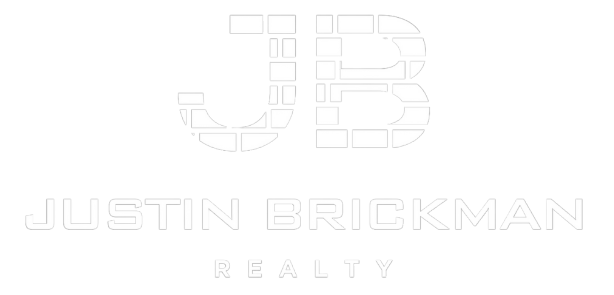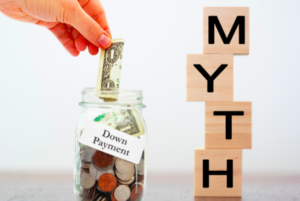Home Buying Myths:
Debunking the 20% Down Payment Myth:
What You Really Need to Buy a Home
When you’re planning to buy a home, one of the first things you might hear is that you need a 20% down payment. This myth has been around for decades and continues to hold many prospective homeowners back from pursuing their dream. The reality is much more flexible, with several options that can make homeownership attainable for a broader range of buyers. Understanding these options can help you make informed decisions about your financial future, and I’m here to guide you through the process.
The Origins of the 20% Down Payment Myth
The idea that you need a 20% down payment comes from traditional lending practices. In the past, this rule of thumb helped ensure that lenders were protected against potential losses, and buyers with larger down payments were considered less risky. This practice dates back to a time when mortgage lending was more conservative, and a higher down payment was a way to secure better loan terms. However, the mortgage landscape has evolved significantly over the years, and the 20% down payment is no longer a strict requirement.
Why the 20% Down Payment Isn’t Always Necessary
In today’s real estate market, a 20% down payment can be advantageous, but it is by no means mandatory. There are several loan programs designed to make homeownership more accessible, especially for first-time buyers. For instance, FHA loans, backed by the Federal Housing Administration, require as little as a 3.5% down payment. This can significantly lower the barrier to entry for homeownership, allowing you to start building equity sooner rather than later.
Additionally, conventional loans backed by Fannie Mae and Freddie Mac offer down payment options as low as 3% for qualified buyers. These loans do require private mortgage insurance (PMI) if your down payment is less than 20%, but PMI can often be canceled once you’ve built up enough equity in your home.
VA loans, available to veterans and active-duty military members, offer another excellent option. These loans are backed by the Department of Veterans Affairs and require no down payment, making homeownership accessible to those who have served our country. Similarly, USDA loans, designed for rural and suburban homebuyers, also offer zero-down payment options for eligible buyers .
Understanding Private Mortgage Insurance (PMI)
One of the primary reasons people strive for a 20% down payment is to avoid private mortgage insurance (PMI). PMI is a type of insurance that protects the lender if the borrower defaults on the loan. While PMI does add to your monthly mortgage payment, it’s important to understand that it’s not a permanent cost. PMI can be removed once you reach 20% equity in your home, either through paying down your mortgage or through home value appreciation. This means you can start with a lower down payment and still eventually eliminate PMI, potentially saving thousands of dollars in the long run.
The Benefits of Smaller Down Payments
Opting for a smaller down payment can offer several benefits, particularly for first-time homebuyers or those looking to conserve cash for other investments. A lower down payment means you can keep more of your savings in the bank, providing a financial cushion for future needs or allowing you to invest in home improvements, which can increase the value of your property. Additionally, with mortgage rates still relatively low by historical standards, financing a larger portion of your home purchase can make economic sense for many buyers.
How Your Credit Score Impacts Your Down Payment
Your credit score plays a significant role in determining your down payment requirements and the terms of your mortgage. Borrowers with higher credit scores are often able to secure loans with lower down payments and more favorable interest rates. Even if your credit score is less than perfect, there are still loan options available. Lenders may require a slightly higher down payment or offer a higher interest rate, but this shouldn’t deter you from exploring your options. Improving your credit score before applying for a mortgage can help you qualify for better terms and save you money over the life of your loan.
Debunking the 20% Down Payment Myth: Real-Life Scenarios
Let’s take a look at some real-life scenarios to illustrate why the 20% down payment myth is just that—a myth. Consider a first-time homebuyer with a good credit score who qualifies for a conventional loan. With a 3% down payment, this buyer can purchase a $300,000 home with just $9,000 down, rather than the $60,000 they would need for a 20% down payment. This lower down payment allows the buyer to keep more money in savings for emergencies or future investments, while still getting into their dream home.
Another scenario involves a military veteran who qualifies for a VA loan. With no down payment required, this buyer can purchase a home without having to dip into savings, making homeownership possible much sooner than if they had to save up 20%. These examples show how flexible mortgage options can make homeownership a reality for a wide range of buyers.
The Path to Homeownership: Start with the Right Information
The key to successful homeownership is understanding your options and making informed decisions based on your unique financial situation. Don’t let outdated myths hold you back from pursuing your dream of owning a home. With the right guidance and a clear understanding of your financing options, you can achieve your homeownership goals sooner than you think.
As your trusted realtor, I’m here to help you navigate the home buying process, from understanding down payment requirements to finding the right loan program for your needs. Whether you’re a first-time buyer or looking to upgrade, I’m committed to providing you with the latest information, expert advice, and personalized support to ensure a smooth and successful home buying experience.
Homeownership is Within Reach
In conclusion, the 20% down payment myth is one of the most pervasive misconceptions in the real estate world. While putting 20% down can offer certain advantages, it is not a hard-and-fast rule. With a variety of loan programs available, many of which require much lower down payments, homeownership is within reach for a wide range of buyers. Don’t let outdated information hold you back—take the first step toward owning your home today.
Sources:
1. FHA Loans: Everything You Need to Know, U.S. News & World Report
2. Understanding the VA Loan, VA.gov


